Year 1

We launched Slack to the world on February 12th, 2014. Thirteen months after starting work, nine months after releasing our early alpha version, and six months after starting our preview release. We crossed the finish line we'd been sprinting toward for the last year, not fully realizing that we were about to start the real race.
On launch day we arrived at the office early, dressed up to mark the occasion. We flipped a bunch of flags that gated the new billing system and other launch-specific features. Around 9am PST Slack went live. We eagerly watched StatsBot post the numbers into our #general channel. We anxiously tested our first live payment. It worked. Real dollars were being paid into our account.

Our alpha and preview release customers began rapidly converting their free teams to our paid tier. Many had built up significant credits during our preview release and used these to pay for their first year of Slack. Every upgrade was logged in a channel we'd set up to monitor the rollout. The dopamine hit of watching people pay for this thing we'd built together was addictive. And because of how Slack worked we all got to watch it together in real-time.
New customers came pouring in too, driven by the round of press we drummed up for the day. Our graphs (of new customers, upgrades, usage, and payments) all started to "hockey stick" – the much sought after sharp upswing indicative of explosive growth.

Fundraising
Stewart funded the pivot from Glitch to Slack on the money remaining from investment in Tiny Speck. We had run very lean throughout 2013 and into 2014, downsizing offices and keeping minimal staff. We didn't have any sort of perks that people often associate with Silicon Valley tech companies. Every dollar needed to go toward getting our new product off the ground.
In our SF office, Cal would fizz the reusable sodastream bottles each morning and pay for a team coffee each afternoon. He ordered toilet paper for the office bathroom as an Amazon subscription on his personal credit card. In our Vancouver office, one of our first Accounts hires Kim Graves had to put her laptop on a box because we were out of desks. Once we forgot to pay our internet service bill and got cut off. Johnny went into the office on weekends to collect and refund beer bottles. We didn't have any offsites – the often lavish affairs where a company rents out a space to spend time together away from the office, usually with great food and amenities. None of this was in the cards before we had revenue.
With our product in the market and gaining traction that changed. We had a little breathing room for the first time, earned with rapidly growing usage and the first signs of sustainable revenue. Shortly after launch, we raised $42.75M from Social+Capital and a variety of well-connected angel investors such as the Collison brothers (Stripe) and Anthony Casalena (Squarespace).
Our first post-Glitch raise would fund our efforts to start scaling the service up, hiring staff, and renting out larger offices. Stewart and Cal leveraged their reputation and network in tech to capitalize on these fundraising opportunities. And in the post-financial crisis ZIRP era, there was plenty of VC money to go around for promising companies.
We had our first offsite at a winery in Sonoma. About 30 of us got together to figure out what came next. Many of the new staff were old friends and colleagues recruited by the founders and other early employees, hand-picked as the kind of good, smart people the company needed. For those who had worked together before it was a sort of reunion. This also helped smooth the initial growing pains of expanding the team, as we were able to rely on the trust and familiarity built up from previous jobs. Many of us met for the first time in person as we were usually distributed across timezones, countries and cities. We drank wine and hung out by the pool and played Ticket to Ride. The Slack socks we had made arrived in time for the occasion.
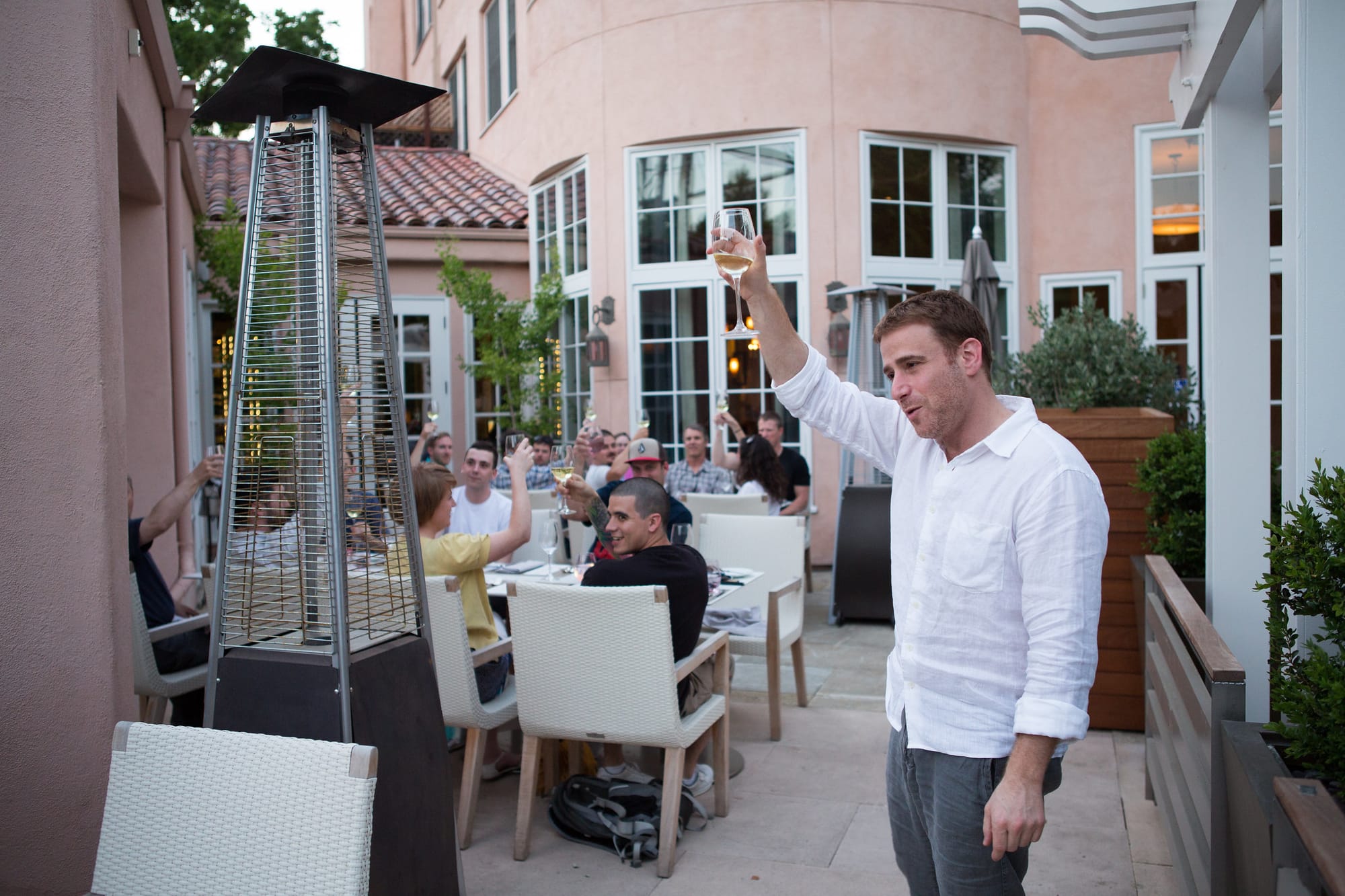
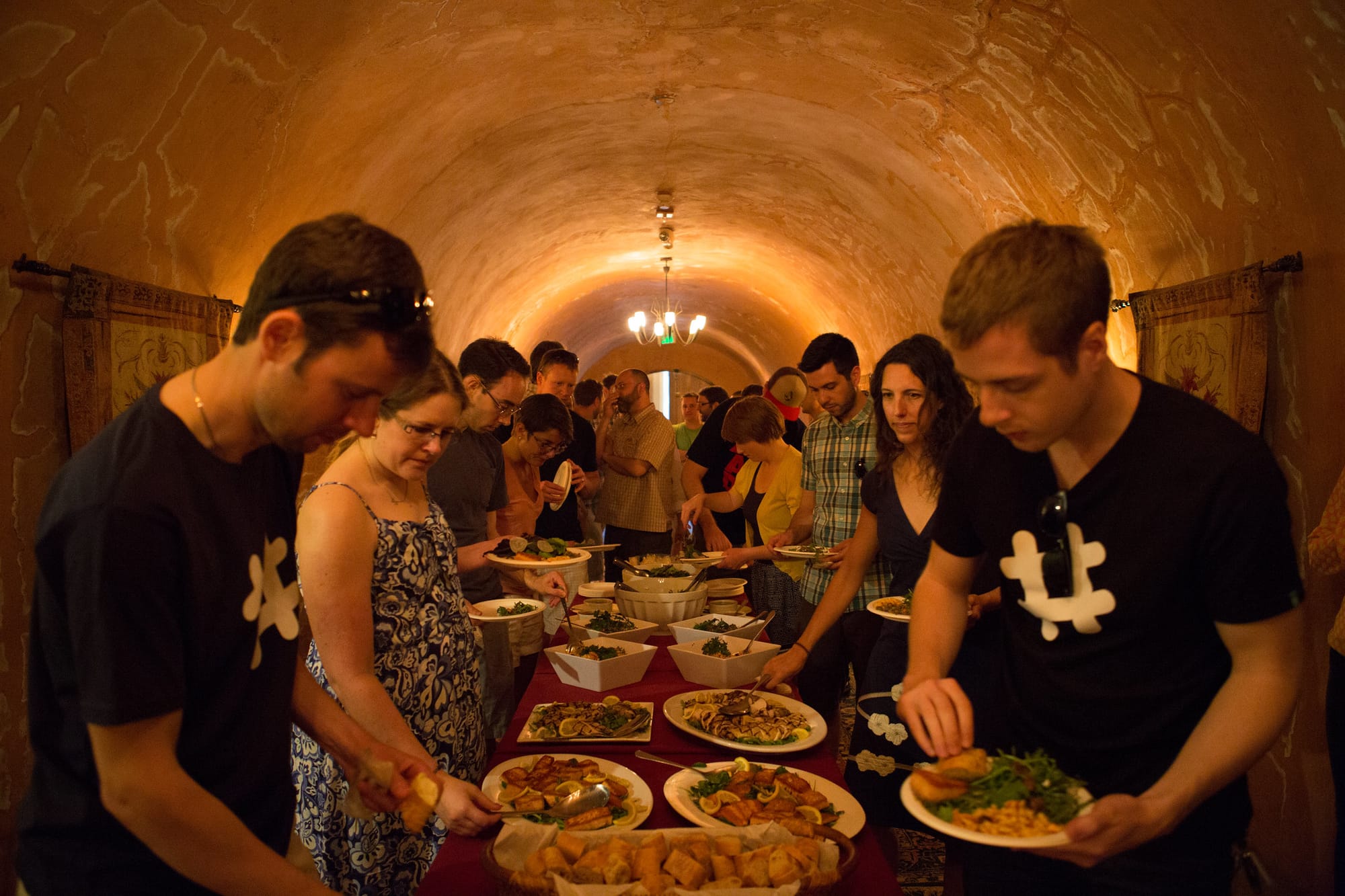
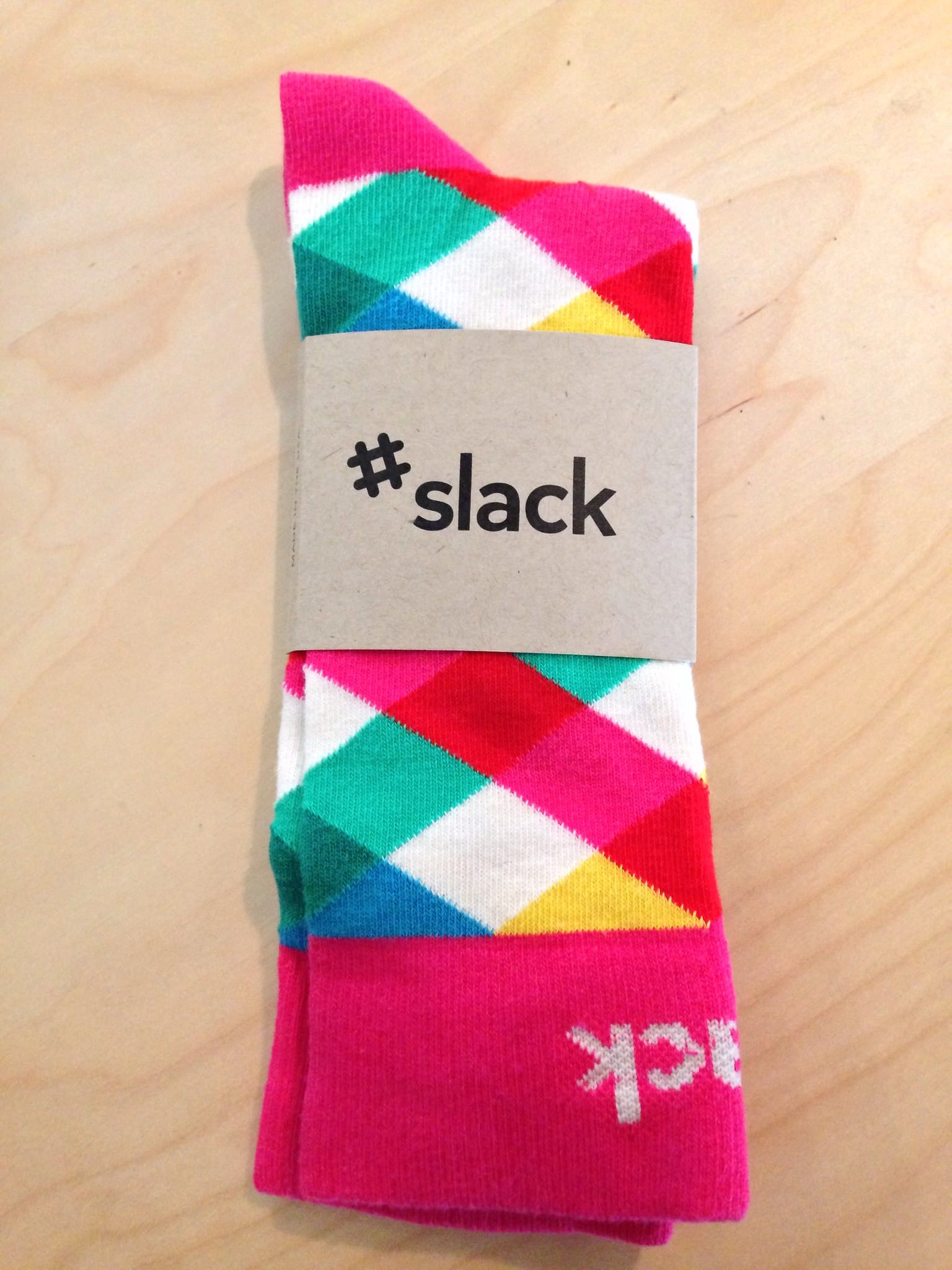
Our first offsite. At left, Stewart Butterfield. Center: Danil Glinenko, Carrie Stevens, Ali Rayl, Brady Archambo. Photos by Scott Schiller.
The initial post-launch round of fundraising quickly snowballed, as Stewart parlayed our success into a series of raises over the course of 2014 and early 2015 that would see our valuation skyrocket. In our first year on the market, we'd gone from just another fledgling startup with no revenue to a unicorn valued at $1.1 billion, growing from about 15,000 active users to over 500,000. We were, for a time, the new darling of Silicon Valley.
All the attention included love from some celebrities who liked the product. Jared Leto was a particularly fervent early fan, using Slack to interact with his teams across projects in his acting and music careers. He sent regular feedback about the app and even the occasional sunset photo to the team. When he won his Oscar for Best Supporting Actor that fall for Dallas Buyers Club he came by with his statue for a visit at the office.
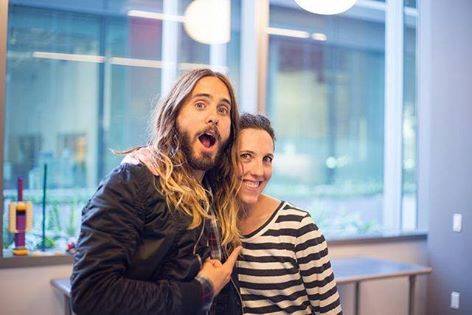

Jared Leto with Ali and Cal and Oscar. Photos by Scott Schiller.
Spreading the word
Initially this growth was fuelled by the same sources that had expanded our beta and preview releases: growing use within companies as Slack spread across departments, and word of mouth from customers talking to each other. People just really liked using Slack.
Potential customers were reaching out to us, or just going ahead and signing up. We hadn't spent any money on marketing, nor did we employ anyone in sales. Stewart deftly orchestrated press coverage to emphasize how Slack was different, and to highlight the many flaws of business-as-usual workplace communication tools like email.
In August, Wired published a long essay on Slack and Stewart. This was a big deal. Most of the coverage up to this point had been from tech-industry outlets, with only minor mentions in major publications. The Wired essay introduced more casual observers to Slack, and its charming and clever CEO.
It cemented the origin story of Slack as a "phoenix from the ashes" of Glitch, mirroring Flickr's rise from the failure of Game Neverending. People loved this story. Fortunately, it was true. It also helped explain what exactly the product was:
Let’s say you drop a link to a PDF stored in your folder in your company’s Dropbox. People on your team will see this file pop up in Slack, with a summary, and can click on it to read—right there in the app. Your colleagues can review it, make notes about it, and comment on what you ought to do next without ever leaving the application. One of your team members says, “You really did it, bro! This is a massive thought bomb.” Yay! They adore you. Not only did Slack make sure the document went to all the right people, but it also indexed the full text of the document, as well as the conversation that took place around it, and attached the conversation to the document in its database. Now: Imagine that weeks pass by. You, sadly, die unexpectedly. Now that you’re gone, your coworkers need to pull up the document, but they have trouble finding it in your disorganized Dropbox folder. So instead they search Slack for “massive thought bomb” and, presto, there it is, along with all your notes and the feedback you received from your team. That’s Slack.
This kind of practical explanation helped connect the dots for people between how they were working – with information spread across tools in a fragmented mess – with what Slack could do for their team – bring all their workplace communication into one place.
The Wired article also helped establish the mythos of the company and its founders, playfully teasing Silicon Valley tropes while positioning Stewart as the genuine article. A smart, blunt, philosophical visionary.
A lot of reporters want to talk to him right now—very many! There’s nothing like $43 million in fresh funding and a hotshit product from a ginger-headed, e-cig smoking, two-time visionary to make the media sit up and notice.
Sandwich's initial "So Yeah, We Tried Slack..." spot. They would later reprise the story in "Slack WFH" during the pandemic. Adam and Sandwich, if you're reading this, thank you. You're the best.
That same month, we commissioned our first ad from the legendary team at Sandwich. It told the (true!) story of how Adam Lisagor initially declined Stewart's request for a video because he was happy with email. Sandwich then became avid converts to Slack once they tried it.
The video – told with Sandwich's iconic mix of deadpan humour and authenticity – offered a charming behind-the-scenes of Sandwich's process of making a video about Slack while using Slack. It was a perfect complement to Slack's quirky voice and character, and was proof you could encapsulate the value proposition of Slack with a succinct and appealing story (something we'd struggled to achieve ourselves). The comments on the YouTube video from the time attest to its effectiveness as a testimonial. Since then it's been watched nearly 1.4 million times.
Getting down to business
The whirlwind of media interest and funding news continued throughout our first year. Meanwhile inside the company we focused on getting set up in offices that could house our growing team. We vacated Tiny Speck's cherished space in SF and moved to a new building on Folsom St. In Vancouver we moved across the street from the tiny office we'd occupied since the beginning of 2013 to a renovated warehouse with room to grow.
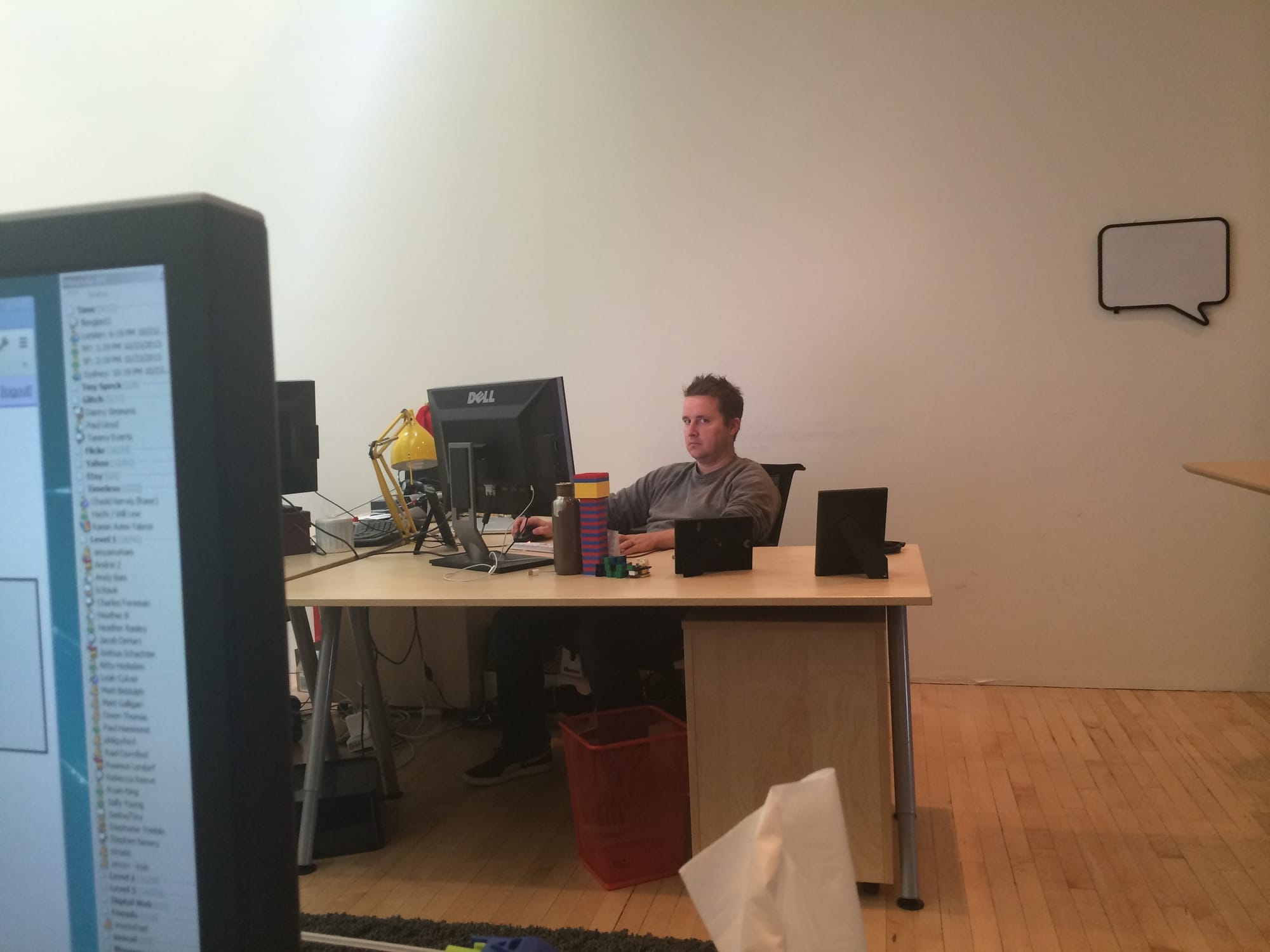
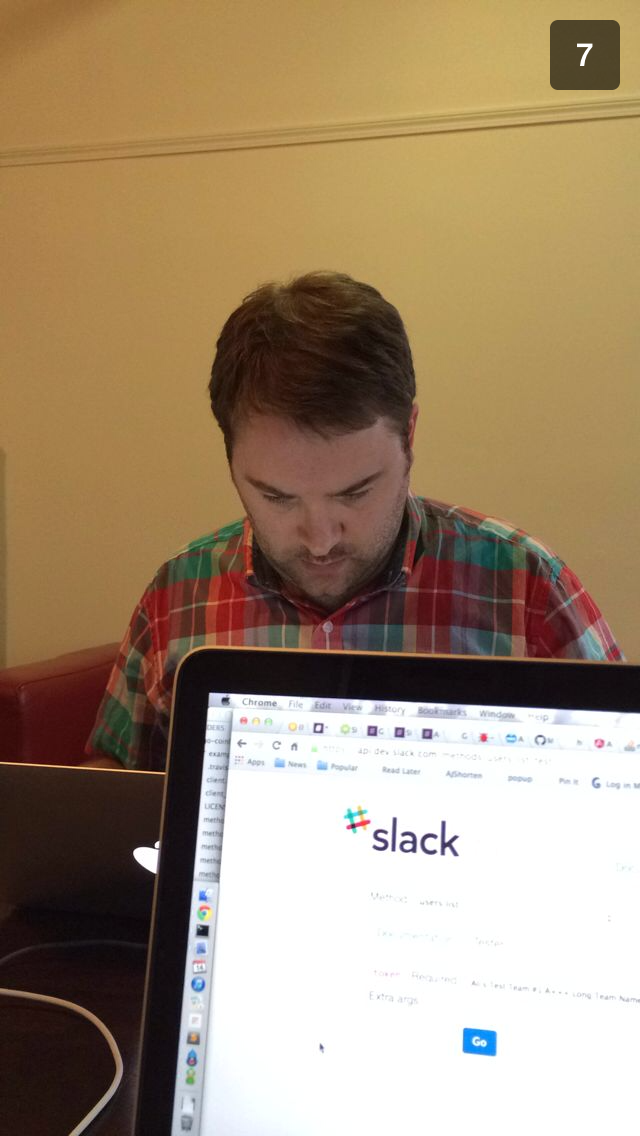
Myles and Cal just before moving out of our Clementina office in SF.


Getting our name on the sign at our first grown-up office in San Francisco on Folsom St. Milo Watanabe (Slack's first engineering intern) reclining at a freshly built desk.


Slack's lovely Vancouver office after renovation. We were in "walls decorated with Norwegian moss" money at this point.
Hiring and onboarding new staff started to take a lot more of our collective energy. Our customer support team was growing alongside our customers. Our engineering team began to swell as we built out teams to focus on our platform and API, clients, and infrastructure. We started to need managers for the first time to start coordinating all these people. And our growing office footprint needed facilities managers and receptionists. We were starting to look like a real company.
Postscript
Two quick notes.
First, thank you Scott Schiller (OG Slack frontend engineer!) for sharing your photos. ❤️
Second, this week Johnny spoke with Allen Pike on his podcast It Shipped That Way: https://www.itshipped.fm/episodes/28.
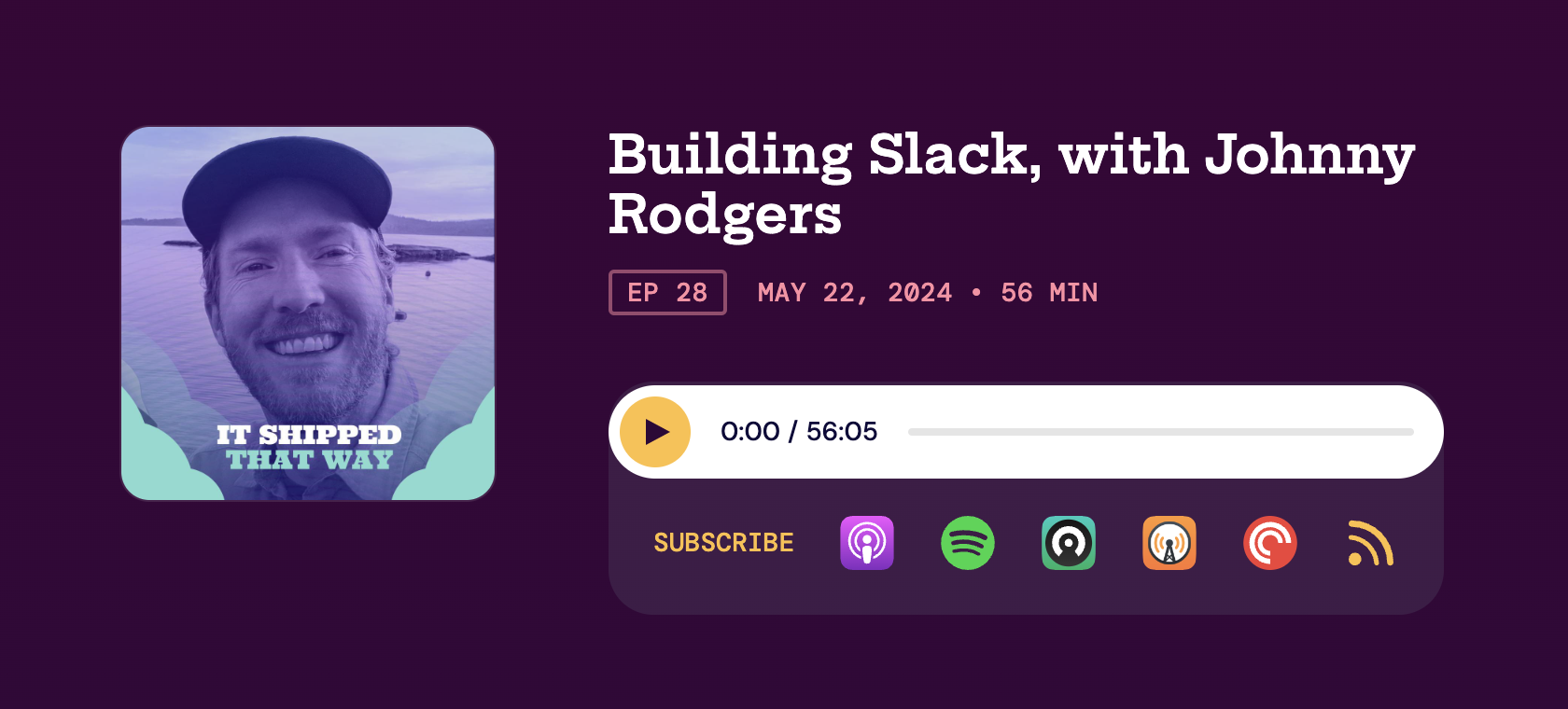
Listen online or wherever you get your podcasts.
